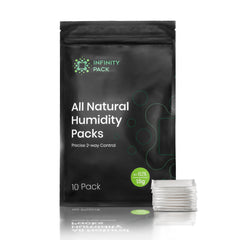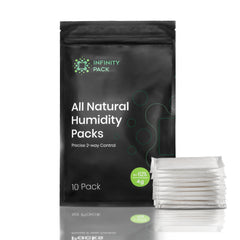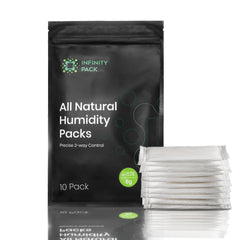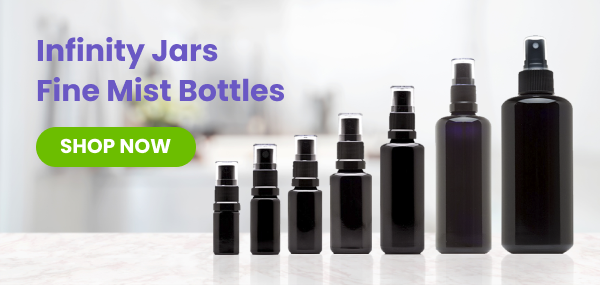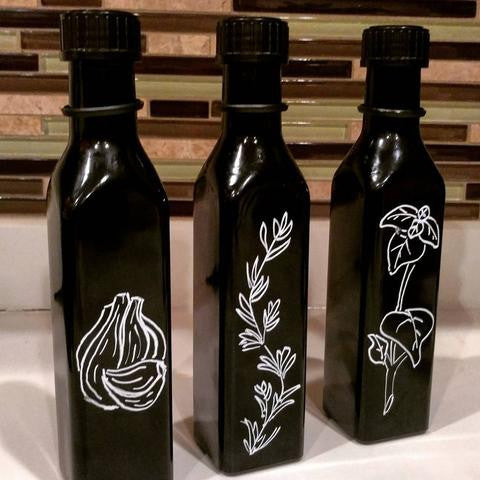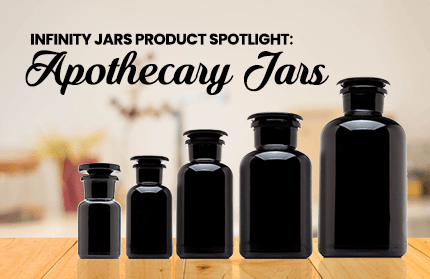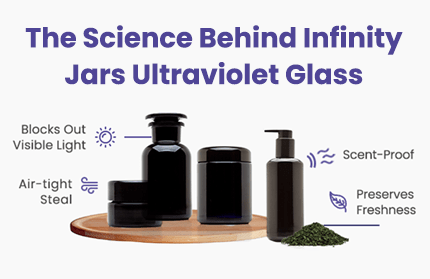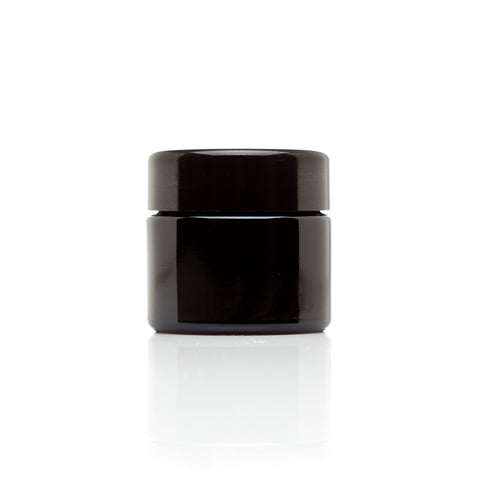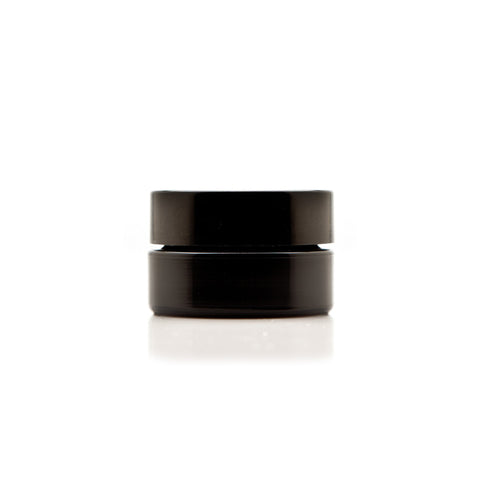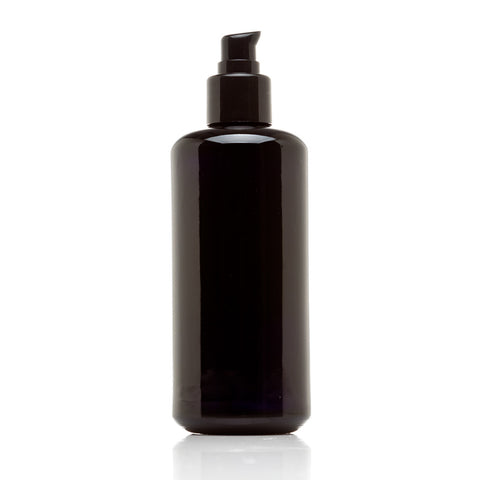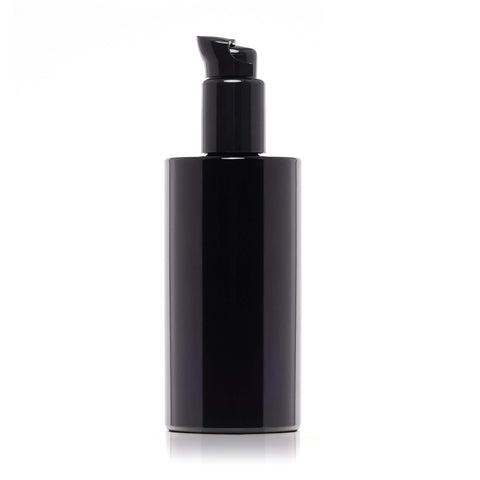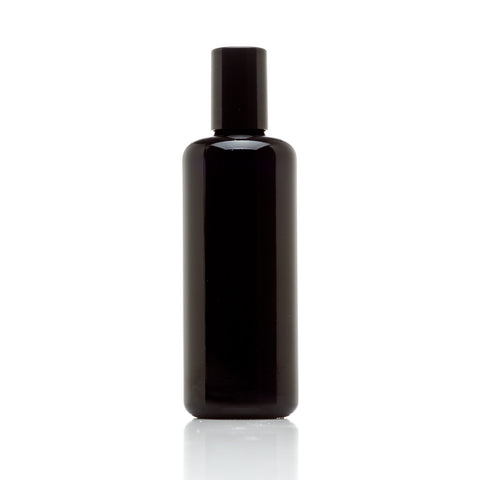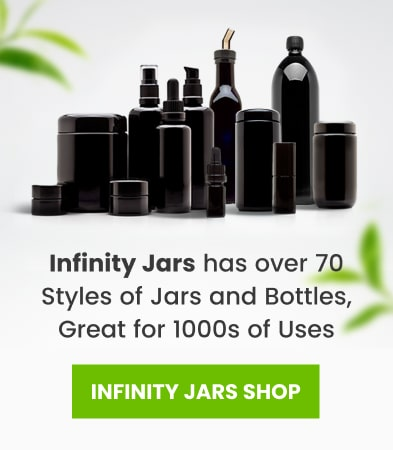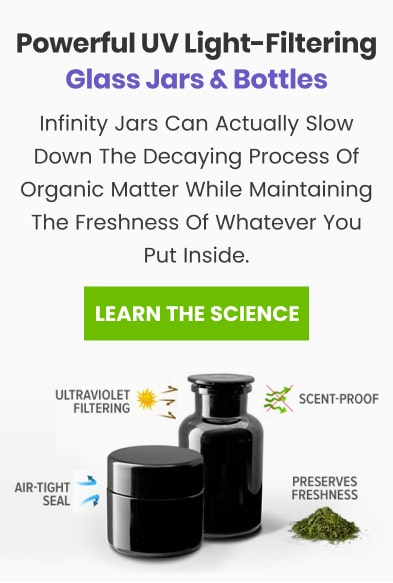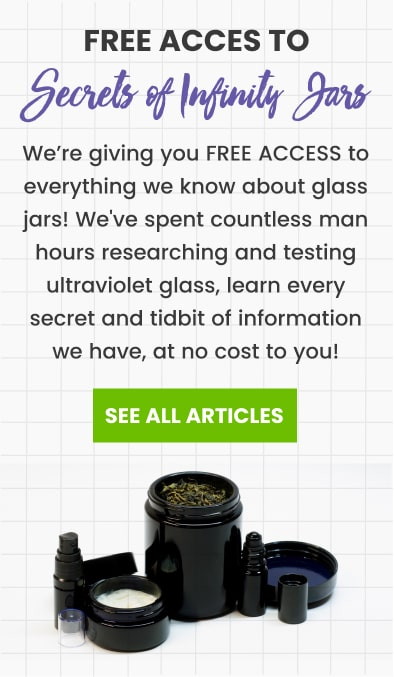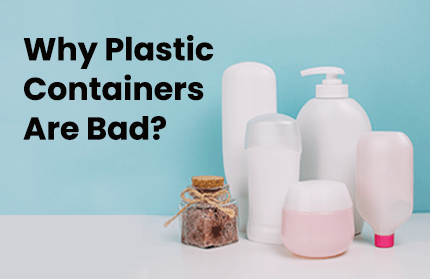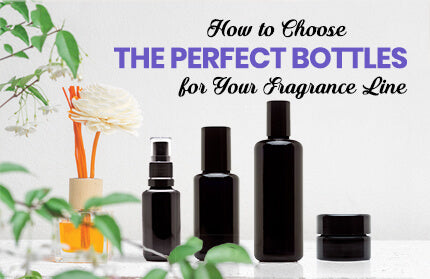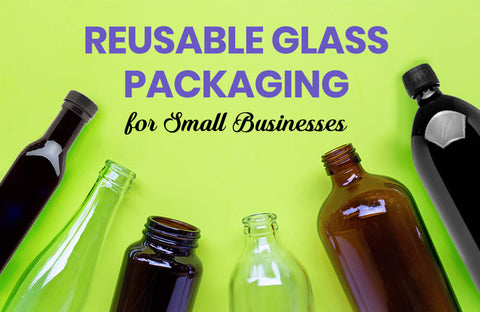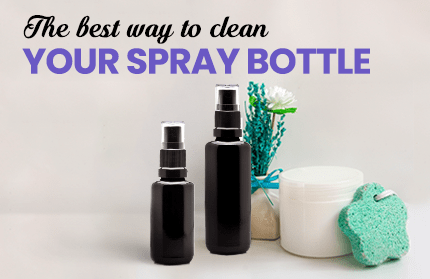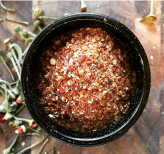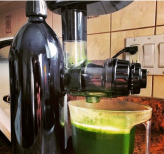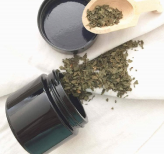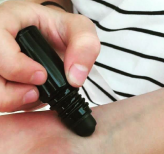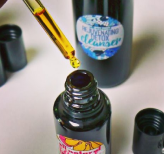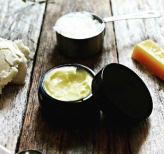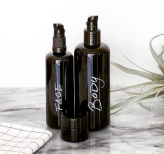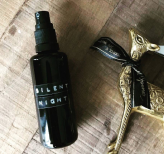
The Best Way To Clean Your Spray Bottles (And Why You Should Do It)
Misting spray bottles are simply terrific because they serve more than just a container. They are also a wonderful tool for dispensing liquid products. You can use them in applying chemical or organic cleaners, perfumes, colognes, air fresheners, hairspray, pepper spray, and even salad dressings.
However, spray bottles also possess a rather complex structure. This is mainly due to their dispenser or nozzle. Because of this component, spray bottles may be a more challenging kind of bottle to clean and reuse
Unlike with other jars and bottles that have simpler caps, typical dishwashing methods may not be enough to clean spray bottles. Moreover, the contents they usually hold are mostly very strong chemicals and substances. Not being able to clean the container thoroughly may leave certain amounts of these chemicals in the container. Consequently, these could contaminate the new contents you will fill the bottles with.
Cleaning misting spray bottles may not be as easy as cleaning most other types of containers. Still, there are certainly achievable ways on how to do it yourself. The functionality of spray bottles is too good to let this small issue stop us from reusing them. Don’t worry. We will help you.
Understanding How Spray Bottles Work: Parts and Mechanism
Before moving to the cleaning part, let us first take a closer look into our chosen subject matter.
Misting spray bottles may be one of the best examples of how we can apply principles found in nature into simple technology. The ingenious idea behind spray bottles is actually the same principle that enables our hearts to pump blood throughout the body. It is what we call a reciprocating pump mechanism.
In a reciprocating pump, two alternating actions are involved. The first action is used to collect liquid into a small chamber through one opening. The second action is to release the liquid through a second opening. This is how the heart collects oxygenated blood from the lungs into its chambers and then pumps it out to the rest of the body.
In a misting spray bottle, the two actions are done whenever you press the button (or actuator) and second, when the button rises once you release it. Releasing the actuator will allow the pump to suck liquid from inside the container to a small cylindrical chamber. The chamber is located in the neck area of the bottle. Pressing the actuator will then release the liquid from the chamber into the nozzle and out of the bottle.
The reciprocating pump is a relatively simple concept but serves excellently as a dispensing mechanism for spray bottles. It can also be found in many other applications, such as medical equipment, and aeronautics. It is also a fundamental principle used in extracting water and oil from underneath the earth.
The Fine Mist Spray Bottle
A very popular type of spray bottle is the Fine Mist Spray Bottle. It is a great spray bottle because of how it can spray liquid in such small droplets -- so small that it practically turns its contents into mist. Smaller droplets mean a more even distribution. That is why it works great as a liquid dispenser.
Fine mist spray bottles still work with a reciprocating pump. However, this type of spray bottle uses a special part called an Insert. The Insert is simply a mouthpiece wherein the liquid passes through a set of channels before exiting the bottle. This set of multiple channels is what creates the mist pattern whenever the contents are dispensed.
The structure of the fine mist spray bottle is also ideal for minimizing the bulkiness of the container. They are known for having a sleek, elegant form. Misting spray bottles are definitely the cool crowd of the spray bottle world. They are ideal for colognes, perfumes, essential oil blends, yoga mat cleaners, air fresheners, and more. Terrific, don’t you think?
Infinity Jars features it own set of Fine Mist Spray Bottles.
If you have other types of spray bottles, the cleaning tips we will discuss will work just as well for those.
Parts of A Fine Mist Spray Bottle
The makeup of a fine mist spray bottle involves a number of different parts. The designs and the name of the parts may vary widely from one manufacturer to another. Still, the principles that all of them use are basically the same.
As a general guide, we can refer to this list to determine the different pieces that build this clever device. Let us try to see what these components are so that we can have a better picture of how to clean them later.
- Dust Cap
- Actuator
- Insert
- Closure
- Gasket
- Pump Mechanism
-
Dip Tube
- Dust Cap
The Dust Cap is the topmost part of the bottle. It is a safety cap that guards the actuator and the spray hole from dust and other harmful materials. It also keeps you from accidentally pressing the actuator.
The dust cap comes in different materials and finishes. Some people may consider it an adjunct and is prone to being lost. Still, its purpose is obviously quite important too.
We recommend that you refrain from reusing spray bottles that have no dust caps. If possible, look for a replacement cap.
- Actuator or Trigger
Covered by the Dust Cap, the actuator is the part you press to dispense the bottle’s contents. It sticks out of the container like a head.
You might be familiar with lotion dispensers with actuators that are table-shaped, having a thin neck and a flat top. However, the actuator in a fine mist spray bottle is hollowed to hold other components inside of it. In a fine mist spray bottle, the actual spray hole can be found on the face of the actuator too.
- Insert or Nozzle
The Insert is practically the mouth of a fine mist spray bottle. More than that, however, it is actually the part that defines the spray bottle. This tiny piece is what turns the liquid contents into mist. Its interior consists of multiple channels where the liquid passes through before leaving the container.
The Insert is fitted inside the actuator and only appears as a small hole on its surface.
- Closure
The closure wraps the spray bottle like a collar right below the actuator. The closure fastens all components together onto the actual bottle. The Dust Cap also rests on top of the closure where it snaps securely in place.
The closure could be smooth, matte or satin. Sometimes it is even designed to appear seamlessly connected to the bottle.
- Gasket
Even though it is one of the least obvious parts, the gasket is actually a vital piece to the assembly of the spray bottle. The gasket is a thin flat material that serves as a seal to prevent the contents from leaking. It is located at the bottom of the closure in the area where it meets the actual bottle.
The materials used as gasket may vary depending on the substances that it is meant to leak-proof. It goes through tests to ensure its compatibility and reliability.
- Pump Mechanism
The heart of every fine mist spray bottle is the Pump Mechanism. Unlike the other parts, the pump mechanism is composed of several smaller parts including a piston, a housing cap, a stem, a spring, a seal, and a mother housing.
How the pump works was explained in the earlier part of this article. It is what transfers the liquid contents from the container to the actuator. The alternating actions of pushing down the actuator and letting it spring back up is what powers the pump. Releasing the actuator is what allows the pump to draw the liquid contents from the bottle and fill up its chamber. Consequently, pushing down the actuator is what drives the liquid from the chamber to the Insert and out of the bottle.
Do you notice that when a spray bottle is fresh from the store, it does not expel its contents during the first couple of pressing? That is because of how the pump mechanism works. When a spray bottle is still unused, the pump chamber is still empty. It needs the springing up motion of the actuator to allow it to fill its chamber first. Naturally, the contents will only come out at the second or third press once the chamber has already filled up.
- Dip Tube
To allow the liquid contents to travel from the bottom of the bottle into the pump, they pass through a thin passage called the Dip Tube.
The Dip Tube is connected to the bottom of the pump and extends to the very bottom of the container. Its bottom is usually cut into a “V” shape or at a diagonal angle to prevent the tube from clogging.
- The Bottle / Body
The actual bottle or the body is the largest part of the entire spray bottle. It basically holds the liquid contents and it is also what keeps the container standing upright.
Though the majority of the dispensing parts are made of plastic (except for the spring), the body may be made from a number of materials such as plastic, metal and glass.
In terms of advantages for reusing, we recommend that you choose spray bottles made of glass. Glass has unique adsorbent properties that allow it to hold liquids more effectively than other materials. Learn more about the benefits of glass bottles here.

Why Choose Reusable Spray Bottles?
Do not feel burdened by the small challenge of cleaning a misting spray bottle. Reusing spray bottles offers more than just the satisfying feeling of saving a pretty little bottle. It provides you (and the planet!) with some wonderful benefits that are worth thinking over.
- Reduce Waste
According to The Guardian, humans are producing plastic bottles at a rate of 20,000 per second. That is an unimaginable, 1.2 million bottles per minute, 72,000,000 bottles per hour, and 1,728,000,000 bottles per day! The planet is virtually choking on plastic bottles.
You may think that choosing not to recycle a couple of bottles does not make any difference to the billions more that we are throwing away. Well, guess what? There are 7 billion other people that may be thinking the exact the same thing. Change will have to start with ourselves through the helpful little things that we choose to do.
One thing you can do is to opt for glass bottles, since they are a far better alternative to plastic bottles.
- Save Some Money
Needless to say, being able to reuse bottles means a decent amount of money saved. Having a number of reusable spray bottles allows you to buy only the contents you need and this is a real good deal.
The content-to-bottle price ratio of products with spray bottles is considerably close compared to other liquid products. In other words, the cost contributed by spray bottles to the total price of the product is fairly high. This is due mainly to the relatively high production cost of the dispenser. As we have learned, this particular feature of spray bottles is composed of numerous parts that require assembly and tests.
Therefore, being able to spare yourself from buying new spray bottles is certainly a smart trick. All you need is to know is how to clean and reuse them.
- Help Stay Organized
After spending so much energy to getting your house in order, don’t you just want things to remain organized? We get it. It is not that we are excessively attached to the way we organized everything. It just that it’s difficult to keep adapting and readapting to the changing setup in the house. There is a certain peace of mind in knowing that things are where they are supposed to be in times when you need them. It is one of those little details that makes a big difference to our day.
Having containers dedicated to the stuff you use is surely something that could help you in this. If you are able to reuse your spray bottles, then you can be sure that its contents are always what you need when you need them.
- Decluttering Effect
Do you look at your kitchen, makeup area, or work desk after a thorough cleaning and organizing and feel that somehow it is still cluttered? We may have a possible answer: product labels.
Packaging labels provide helpful information about the stuff we buy. However, when different sorts of labels are placed together side by side, they can create one chaotic sight.
For this reason, clean reusable bottles will do you a great favor. Using plain bottles instead of the original product containers can result to a surprisingly neater and more uniform look.
Do you want to discover how big a difference having uniform, label-less containers can do to the look of your house? Try our flexible and cost-friendly Variety Packs!
Risks of Poor Cleaning Before Reusing Spray Bottles
There are so many things that could go wrong with unclean spray bottles. For one thing, they pose risks to our health. Also, they could easily put a bottleful of household products to waste.
Here are some very good reasons why a good, thorough cleaning is important in reusing spray bottles:
- Compromising Chemical Makeup of New Content
One apparent risk in reusing unclean spray bottles is that they may compromise the chemical makeup of the new content. Spray bottles are frequently used for household substances with high concentrations. Such chemicals are definitely capable of negatively affecting the properties of other liquids. They can expedite the expiration of the new contents or degrade their useful qualities.
- Decayed Substances
Spray bottles are made up of many small parts and have a rather unusual form compared to other types of bottles. This particular characteristic makes spray bottles particularly difficult to clean. Surfaces and gaps that are difficult to reach are areas where unwanted substances could remain present even after washing. When these substances are left behind, they may eventually rot and contaminate the whole container.
- Clogging
Unwashed contaminants and residues are truly harmful to the bottle’s new content. Even further, they can cause problems with the spray bottle’s dispensing mechanism. Unwanted substances may mineralize and cause obstructions in the system.


Effective Method for Cleaning Spray Bottles
Here now is our recommended way to clean your spray bottles and make sure that they are ready for reusing. You can do all these at home with very simple household tools.
- Inspect Your Bottles
Of course, you must assess your spray bottle first. Always consider the contents that they were previously used for. Some contents may be harmful to your skin so handle those with with extra care. Try to see if there are any problems with the mechanism or if there are missing parts such as the Dust Cap. You should also scan the container to see if there are any cracks or dents. Remove the cap and check the inside of the body. If there are problems with the spray bottle, it may not be worth cleaning and reusing.
- Rinse / Pre-wash
Give your bottle a good rinsing. If possible, use a hose or a faucet with a relatively high pressure. This will wash off most of the materials on the surfaces and make it easier for the more intensive cleaning later.
It will also allow you to handle the bottle more safely when you move later to disassembling it.
3. Flushing
Now, here is an important step that you have to do. It is called flushing. For this part, we recommend that you use a pair of gloves.
Get a mug and fill it with hot water. Place the mug in your kitchen sink. Very carefully, take the dispenser (without the bottle) and submerge the bottom of the Dip Tube in the water. Make sure that the Insert faces the sink and away from your body. Then, pump the spray several times to allow the water to flush the whole dispensing system thoroughly.
4. Remove The Labels (If Any)
While the spray part gets a flushing treatment, the bottle also needs to have its label removed.
Rinse the bottle with warm water first. Then, with gloves on, soak the bottle into a deep basin with steaming hot water. Let it sit for about 10 minutes before pulling it out with tongs.
Hold the bottle with a towel and begin peeling off the label while it is still hot.
If the label does not come off completely, soak the bottle in water with baking soda. Try peeling off the label after about half an hour.
5. Disassembling
Disassembling and reassembling your spray bottle may be the trickiest part of cleaning it. We only recommend this step if you are confident in doing it. There is a considerable risk of breaking the spray bottle parts or even injuring a finger or two.
By now, you should have already separated the bottle from the dispenser. Disassembling mainly concerns the dispenser only, so you can put the bottle aside.
First, dry off the dispenser with a clean rug for a better grip, then hold it in your hand. Make sure that you study it as well as you can. One by one, try to take out its individual parts. The actuator ot the dip tube would be the best part to start with.
Do not try to separate all the parts. Some parts such as the gasket and the pump mechanism are not intended to be taken apart.
Keep in mind that you will put everything back together again later, so you must take note of where each part should go.
At the least, you should have five different segments after disassembly:
- The Dust Cap
- The Actuator with the Insert
- The Closure with the Gasket and the Pump Mechanism
- The Dip Tube
-
And the Body / Bottle
6. Soap and Water
After separating the spray bottle parts, place them in a basin and wash them with warm water and dishwashing soap. Use a cotton swab for hard-to-reach parts such as the threading of the bottle and the closure, and the inside of the actuator.
Rinse all the parts generously with water. It is important that you leave no soap on them.
7. Sterilizing
Your bottle may appear all clean and shiny at this point. However, they need to be clean at the micro-level. Soap and water alone are not able to kill 100% of bacteria and viruses present in the surface of the bottle parts. The best way to do this is by sterilizing it.
With parts still dismantled, sterilize the spray bottle just like how you sterilize baby bottles. You can boil them for a couple of minutes or you can also steam them. However, make sure to take out any plastic parts before applying heat.
Because spray bottle dispensers are mostly made of plastic material, we do not recommend that you sterilize them in your oven. The plastic parts may not be able to withstand the oven’s heat.
8. Drying
After sterilizing, leave all the bottle parts to dry off completely. Place them on top of a clean towel in a clean area where there is a good amount of sunshine.
9. Reassembling
With clean, dry hands, you can now begin reassembling the spray bottle. Make sure that all parts are securely in place and that nothing is loose.
10. Air flushing
Lastly, give your spray bottle an air flush. With nothing inside the bottle, simply press the actuator several times. This is to make sure that there is no moisture trapped in the dispensing system.
There you go! Your spray bottle is now clean and ready to be reused.
Infinity Jars Fine Mist Spray Bottle Collection
Discover Infinity Jars selection of reusable Fine Mist Spray Bottles. All our bottles feature UV glass material guaranteed to maintain the potency of products and prevent staleness. They are excellent for a great number of uses. Fill and refill them with your homemade colognes, your signature perfumes, air fresheners, yoga mat cleaners, you name it!
Choose between a range of sizes from 5ml to 200ml bottles. We also offer replacement spray applicators.

Summary
There are no doubts about the ingenuity of misting spray bottles. They act both as a container and an effective dispenser for our household liquid products. The misting spray bottle is fascinating because it uses a surprisingly simple principle to serve a rather complex purpose.
Keeping reusable spray bottles may seem like something one would do just for fun, but it is actually a habit with considerable benefits. It helps in conserving resources and reducing waste. Reusing bottles also saves you some money. It even helps your house stay organized and visually peaceful.
There are definitely more than a few benefits that reusing spray bottles could give. However, we should never neglect cleaning them before reusing them for another bottleful of contents. It may be a little tricky, but knowing how to clean them is key to being able to reuse them.
Bibliography
https://patents.google.com/patent/US5846056A/en
https://www.webmd.com/hypertension-high-blood-pressure/hypertension-working-heart#1
https://www.theguardian.com/environment/2017/jun/28/a-million-a-minute-worlds-plastic-bottle-binge-as-dangerous-as-climate-change
https://www.thoughtco.com/benefits-of-glass-recycling-1204143
https://www.hunker.com/12150004/parts-of-a-spray-bottle
https://newyork.cbslocal.com/2012/03/01/5-tips-for-cleaning-glass-surfaces/
https://www.thespruce.com/glass-cleaning-tips-1900306
https://www.growingupherbal.com/clean-glass-bottles/
https://www.youtube.com/watch?v=BBmbccLnQFc




